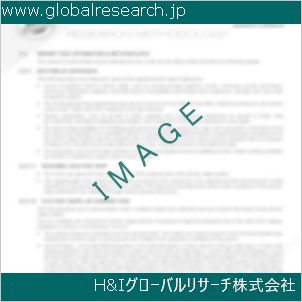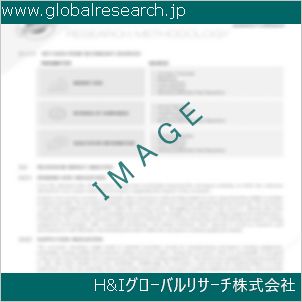Table of Contents
1 Industry Overview of Zinc Oxide
1.1 Definition and Specifications of Zinc Oxide
1.1.1 Definition of Zinc Oxide
1.1.2 Specifications of Zinc Oxide
1.2 Classification of Zinc Oxide
1.3 Applications of Zinc Oxide
1.3.1 Nuclear Application
1.3.2 Non-Nuclear Application
1.4 Industry Chain Structure of Zinc Oxide
1.5 Industry Overview and Major Regions Status of Zinc Oxide
1.5.1 Industry Overview of Zinc Oxide
1.5.2 Global Major Regions Status of Zinc Oxide
1.6 Industry Policy Analysis of Zinc Oxide
1.7 Industry News Analysis of Zinc Oxide
2 Manufacturing Cost Structure Analysis of Zinc Oxide
2.1 Raw Material Suppliers and Price Analysis of Zinc Oxide
2.2 Equipment Suppliers and Price Analysis of Zinc Oxide
2.3 Labor Cost Analysis of Zinc Oxide
2.4 Other Costs Analysis of Zinc Oxide
2.5 Manufacturing Cost Structure Analysis of Zinc Oxide
2.6 Manufacturing Process Analysis of Zinc Oxide
3 Technical Data and Manufacturing Plants Analysis of Zinc Oxide
3.1 Capacity and Commercial Production Date of Global Zinc Oxide Major Manufacturers in 2023
3.2 Manufacturing Plants Distribution of Global Zinc Oxide Major Manufacturers in 2023
3.3 R&D Status and Technology Source of Global Zinc Oxide Major Manufacturers in 2023
3.4 Raw Materials Sources Analysis of Global Zinc Oxide Major Manufacturers in 2023
4 Capacity, Production and Revenue Analysis of Zinc Oxide by Regions, Types and Manufacturers
4.1 Global Capacity, Production and Revenue of Zinc Oxide by Regions 2019-2024
4.2 Global and Major Regions Capacity, Production, Revenue and Growth Rate of Zinc Oxide 2019-2024
4.3 Global Capacity, Production and Revenue of Zinc Oxide by Types 2019-2024
4.4 Global Capacity, Production and Revenue of Zinc Oxide by Manufacturers 2019-2024
5 Price, Cost, Gross and Gross Margin Analysis of Zinc Oxide by Regions, Types and Manufacturers
5.1 Price, Cost, Gross and Gross Margin Analysis of Zinc Oxide by Regions 2019-2024
5.2 Price, Cost, Gross and Gross Margin Analysis of Zinc Oxide by Types 2019-2024
5.3 Price, Cost, Gross and Gross Margin Analysis of Zinc Oxide by Manufacturers 2019-2024
6 Consumption Volume, Consumption Value and Sale Price Analysis of Zinc Oxide by Regions, Types and Applications
6.1 Global Consumption Volume and Consumption Value of Zinc Oxide by Regions 2019-2024
6.2 Global and Major Regions Consumption Volume, Consumption Value and Growth Rate of Zinc Oxide 2019-2024
6.3 Global Consumption Volume and Consumption Value of Zinc Oxide by Types 2019-2024
6.4 Global Consumption Volume and Consumption Value of Zinc Oxide by Applications 2019-2024
6.5 Sale Price of Zinc Oxide by Regions 2019-2024
6.6 Sale Price of Zinc Oxide by Types 2019-2024
6.7 Sale Price of Zinc Oxide by Applications 2019-2024
6.8 Market Share Analysis of Zinc Oxide by Different Sale Price Levels
7 Supply, Import, Export and Consumption Analysis of Zinc Oxide
7.1 Supply, Consumption and Gap of Zinc Oxide 2019-2024
7.2 Global Capacity, Production, Price, Cost, Revenue, Supply, Import, Export and Consumption of Zinc Oxide 2019-2024
7.3 USA Capacity, Production, Price, Cost, Revenue, Supply, Import, Export and Consumption of Zinc Oxide 2019-2024
7.4 EU Capacity, Production, Price, Cost, Revenue, Supply, Import, Export and Consumption of Zinc Oxide 2019-2024
7.5 China Capacity, Production, Price, Cost, Revenue, Supply, Import, Export and Consumption of Zinc Oxide 2019-2024
7.6 Japan Capacity, Production, Price, Cost, Revenue, Supply, Import, Export and Consumption of Zinc Oxide 2019-2024
8 Major Manufacturers Analysis of Zinc Oxide
8.1 Manufacturer One
8.1.1 Company Profile
8.1.2 Product Picture and Specifications
8.1.2.1 Type I
8.1.2.2 Type II
8.1.2.3 Type III
8.1.3 Capacity, Production, Price, Cost, Gross and Revenue
8.1.4 Contact Information
8.2 Manufacturer Two
8.2.1 Company Profile
8.2.2 Product Picture and Specifications
8.2.2.1 Type I
8.2.2.2 Type II
8.2.2.3 Type III
8.2.3 Capacity, Production, Price, Cost, Gross and Revenue
8.2.4 Contact Information
8.3 Manufacturer Three
8.3.1 Company Profile
8.3.2 Product Picture and Specifications
8.3.2.1 Type I
8.3.2.2 Type II
8.3.2.3 Type III
8.3.3 Capacity, Production, Price, Cost, Gross and Revenue
8.3.4 Contact Information
8.4 Manufacturer Four
8.4.1 Company Profile
8.4.2 Product Picture and Specifications
8.4.2.1 Type I
8.4.2.2 Type II
8.4.2.3 Type III
8.4.3 Capacity, Production, Price, Cost, Gross and Revenue
8.4.4 Contact Information
8.5 Manufacturer Five
8.5.1 Company Profile
8.5.2 Product Picture and Specifications
8.5.2.1 Type I
8.5.2.2 Type II
8.5.2.3 Type III
8.5.3 Capacity, Production, Price, Cost, Gross and Revenue
8.5.4 Contact Information
…
9 Marketing Trader or Distributor Analysis of Zinc Oxide
9.1 Marketing Channels Status of Zinc Oxide
9.2 Traders or Distributors with Contact Information of Zinc Oxide by Regions
9.3 Ex-work Price, Channel Price and End Buyer Price Analysis of Zinc Oxide
9.4 Regional Import, Export and Trade Analysis of Zinc Oxide
10 Industry Chain Analysis of Zinc Oxide
10.1 Upstream Major Raw Materials Suppliers Analysis of Zinc Oxide
10.1.1 Major Raw Materials Suppliers with Contact Information Analysis of Zinc Oxide
10.1.2 Major Raw Materials Suppliers with Supply Volume Analysis of Zinc Oxide by Regions
10.2 Upstream Major Equipment Suppliers Analysis of Zinc Oxide
10.2.1 Major Equipment Suppliers with Contact Information Analysis of Zinc Oxide
10.2.2 Major Equipment Suppliers with Product Pictures Analysis of Zinc Oxide by Regions
10.3 Downstream Major Consumers Analysis of Zinc Oxide
10.3.1 Major Consumers with Contact Information Analysis of Zinc Oxide
10.3.2 Major Consumers with Consumption Volume Analysis of Zinc Oxide by Regions
10.4 Supply Chain Relationship Analysis of Zinc Oxide
11 Development Trend of Analysis of Zinc Oxide
11.1 Capacity, Production and Revenue Forecast of Zinc Oxide by Regions and Types
11.1.1 Global Capacity, Production and Revenue of Zinc Oxide by Regions 2024-2029
11.1.2 Global and Major Regions Capacity, Production, Revenue and Growth Rate of Zinc Oxide 2024-2029
11.1.3 Global Capacity, Production and Revenue of Zinc Oxide by Types 2024-2029
11.2 Consumption Volume and Consumption Value Forecast of Zinc Oxide by Regions, Types and Applications
11.2.1 Global Consumption Volume and Consumption Value of Zinc Oxide by Regions 2024-2029
11.2.2 Global and Major Regions Consumption Volume, Consumption Value and Growth Rate of Zinc Oxide 2024-2029
11.2.3 Global Consumption Volume and Consumption Value of Zinc Oxide by Types 2024-2029
11.2.4 Global Consumption Volume and Consumption Value of Zinc Oxide by Applications 2024-2029
11.3 Supply, Import, Export and Consumption Forecast of Zinc Oxide
11.3.1 Supply, Consumption and Gap of Zinc Oxide 2024-2029
11.3.2 Global Capacity, Production, Price, Cost, Revenue, Supply, Import, Export and Consumption of Zinc Oxide 2024-2029
11.3.3 USA Capacity, Production, Price, Cost, Revenue, Supply, Import, Export and Consumption of Zinc Oxide 2024-2029
11.3.4 EU Capacity, Production, Price, Cost, Revenue, Supply, Import, Export and Consumption of Zinc Oxide 2024-2029
11.3.5 China Capacity, Production, Price, Cost, Revenue, Supply, Import, Export and Consumption of Zinc Oxide 2024-2029
11.3.6 Japan Capacity, Production, Price, Cost, Revenue, Supply, Import, Export and Consumption of Zinc Oxide 2024-2029
12 New Project Investment Feasibility Analysis of Zinc Oxide
12.1 New Project SWOT Analysis of Zinc Oxide
12.2 New Project Investment Feasibility Analysis of Zinc Oxide
13 Conclusion of the Global Zinc Oxide (CAS 1314-13-2) Industry 2024 Market Research Report
| ※参考情報 酸化亜鉛(Zinc Oxide, CAS 1314-13-2)は、亜鉛と酸素から構成される無機化合物であり、化学式はZnOで表されます。この化合物は、白色の粉末状であり、常温では安定しています。酸化亜鉛の主な特徴や用途について詳しく見ていきましょう。 酸化亜鉛の最も重要な性質の一つは、その半導体特性です。酸化亜鉛は、特にナノ粒子の形態において、光学的特性や電気的特性が顕著に変化します。これにより、紫外線を含む光を吸収する能力があり、そのために太陽光を利用する技術や光触媒としての応用が期待されています。また、酸化亜鉛は、優れた抗菌性を持ち、多くの医療分野や化粧品分野で重要な材料とされています。 酸化亜鉛の種類には主に2つの形態が存在します。一つは「ルビー型酸化亜鉛」で、もう一つは「緑色酸化亜鉛」に該当します。ルビー型は結晶の安定性が高く、高温でも変化が少ないため、主に電子デバイスや光デバイスにおいて用いられます。一方、緑色酸化亜鉛は、より多くの酸素を含有し、色素としての役割を持っています。この特性は、塗料やプラスチック材料において重要視されています。 用途としては、酸化亜鉛は皮膚用の外用薬や日焼け止めクリームに多く含まれています。皮膚の炎症や日焼けから保護する機能を持つため、特に子供用の製品や敏感肌向けの製品に適しています。また、酸化亜鉛は無害であり、皮膚に対して優しいためコスメティック業界でも広く利用されています。さらには、酸化亜鉛は、多くの医療機器用のコーティングや消毒剤として使われることもあります。 工業用途においては、酸化亜鉛はゴム産業で特に重要です。補強剤や硬化剤としての役割を果たし、タイヤやゴム製品の耐久性を向上させます。また、酸化亜鉛は塗料やインクの成分としても一般的に使用され、紫外線による劣化を防ぐ効果を持っています。さらに、電子産業においては、酸化亜鉛はトランジスタやダイオードなどの電子部品に使用される材料でもあり、その半導体特性を活かした利用方法が広がっています。 関連技術として、酸化亜鉛を利用したナノテクノロジーも進展しています。酸化亜鉛のナノ粒子は、表面積が大きく、その性質を改良できる可能性を秘めています。これによって、高効率の太陽電池や高性能の透明導電膜としての研究が進んでおり、将来的に新しいエネルギー変換技術や電子機器の開発に寄与すると期待されています。 近年、環境への配慮が高まる中で、酸化亜鉛の持つ特性が益々注目されています。バイオマスやリサイクル材と組み合わせた環境負荷の低減が図られており、持続可能な材料としての酸化亜鉛の可能性が探索されています。これにより、社会的なニーズに応えながら、新しい市場が生まれることが期待されています。 総じて、酸化亜鉛は多種多様な特性を持ち、医療から工業、さらにはナノテクノロジーに至るまで、幅広い分野で活躍しています。これからの研究と技術開発が進むことで、さらなる新しい応用が開かれることでしょう。科学技術の進展に伴い、酸化亜鉛はその重要性をますます増していくと考えられています。そのため、さまざまな分野における理解と技術の発展が求められ続けるでしょう。 |
❖ 免責事項 ❖
http://www.globalresearch.jp/disclaimer












